Xuan Hu
Cascaded Logic Gates Based on High-Performance Ambipolar Dual-Gate WSe2 Thin Film Transistors
May 02, 2023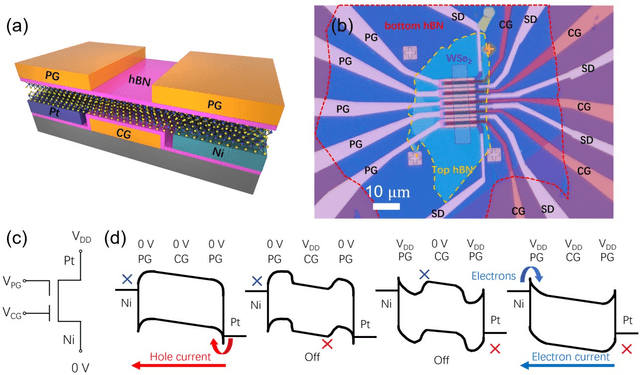
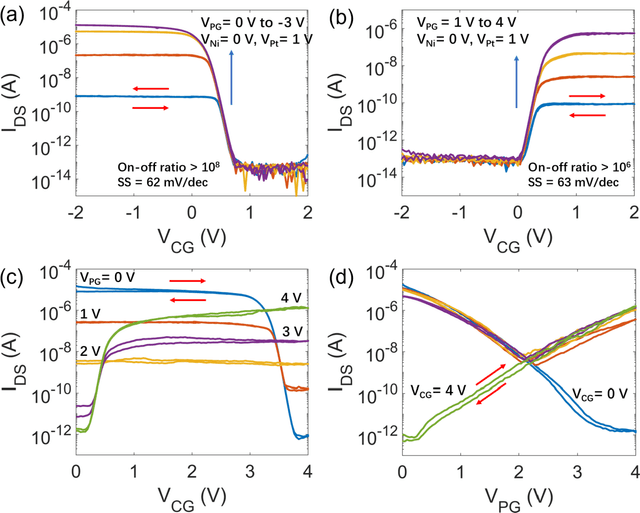


Abstract:Ambipolar dual-gate transistors based on two-dimensional (2D) materials, such as graphene, carbon nanotubes, black phosphorus, and certain transition metal dichalcogenides (TMDs), enable reconfigurable logic circuits with suppressed off-state current. These circuits achieve the same logical output as CMOS with fewer transistors and offer greater flexibility in design. The primary challenge lies in the cascadability and power consumption of these logic gates with static CMOS-like connections. In this article, high-performance ambipolar dual-gate transistors based on tungsten diselenide (WSe2) are fabricated. A high on-off ratio of 10^8 and 10^6, a low off-state current of 100 to 300 fA, a negligible hysteresis, and an ideal subthreshold swing of 62 and 63 mV/dec are measured in the p- and n-type transport, respectively. For the first time, we demonstrate cascadable and cascaded logic gates using ambipolar TMD transistors with minimal static power consumption, including inverters, XOR, NAND, NOR, and buffers made by cascaded inverters. A thorough study of both the control gate and polarity gate behavior is conducted, which has previously been lacking. The noise margin of the logic gates is measured and analyzed. The large noise margin enables the implementation of VT-drop circuits, a type of logic with reduced transistor number and simplified circuit design. Finally, the speed performance of the VT-drop and other circuits built by dual-gate devices are qualitatively analyzed. This work lays the foundation for future developments in the field of ambipolar dual-gate TMD transistors, showing their potential for low-power, high-speed and more flexible logic circuits.
High-Speed CMOS-Free Purely Spintronic Asynchronous Recurrent Neural Network
Jul 05, 2021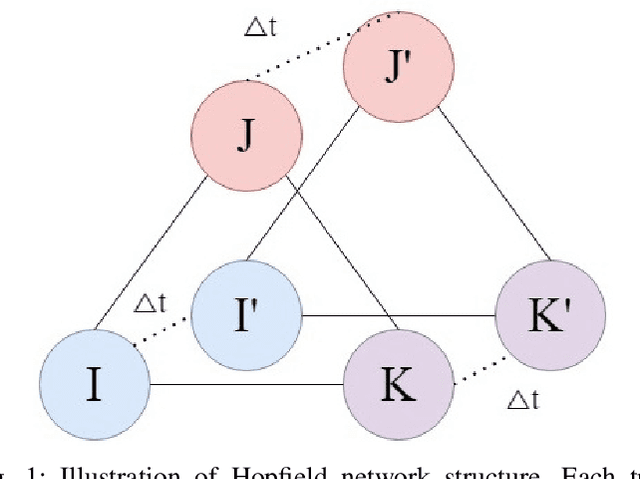
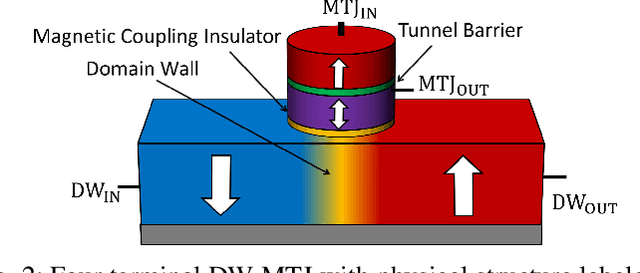
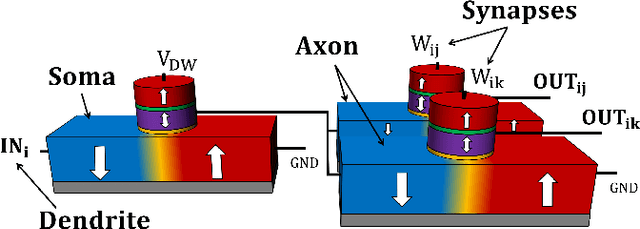
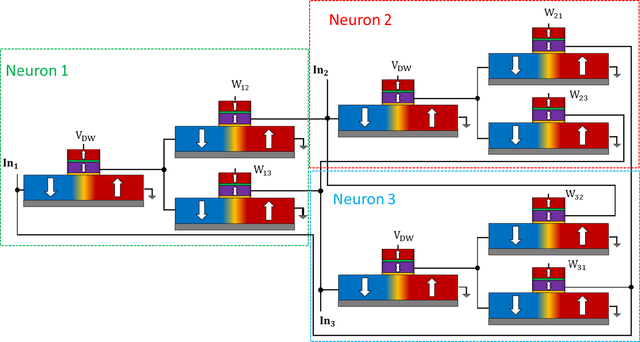
Abstract:Neuromorphic computing systems overcome the limitations of traditional von Neumann computing architectures. These computing systems can be further improved upon by using emerging technologies that are more efficient than CMOS for neural computation. Recent research has demonstrated memristors and spintronic devices in various neural network designs boost efficiency and speed. This paper presents a biologically inspired fully spintronic neuron used in a fully spintronic Hopfield RNN. The network is used to solve tasks, and the results are compared against those of current Hopfield neuromorphic architectures which use emerging technologies.
Analog Seizure Detection for Implanted Responsive Neurostimulation
Jun 11, 2021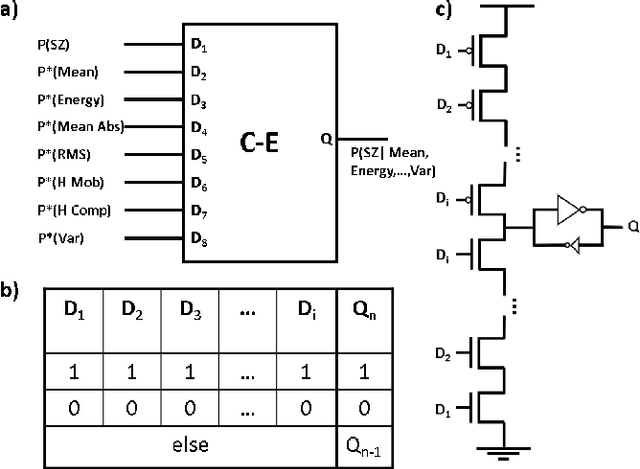
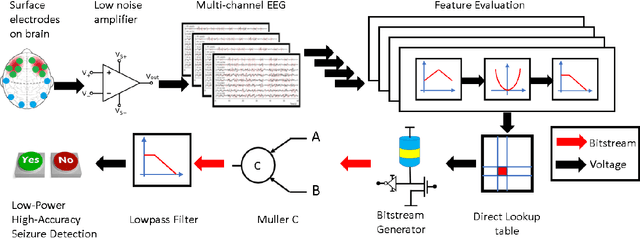
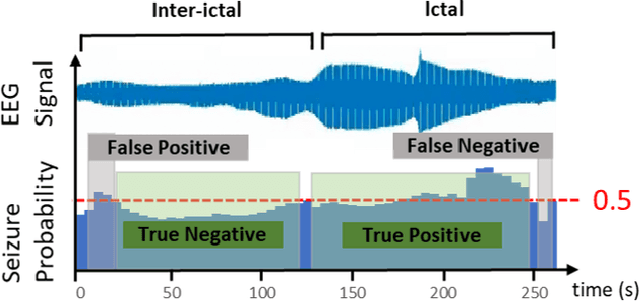
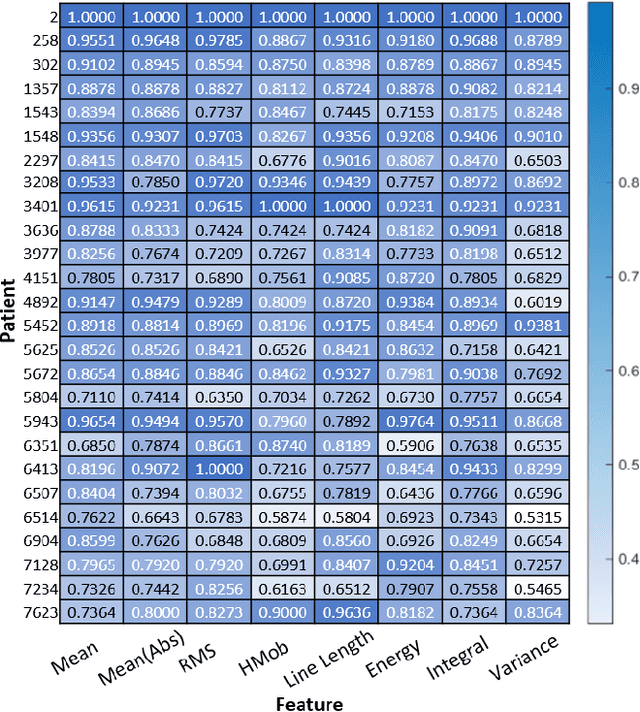
Abstract:Epilepsy can be treated with medication, however, $30\%$ of epileptic patients are still drug resistive. Devices like responsive neurostimluation systems are implanted in select patients who may not be amenable to surgical resection. However, state-of-the-art devices suffer from low accuracy and high sensitivity. We propose a novel patient-specific seizure detection system based on na\"ive Bayesian inference using M\"uller C-elements. The system improves upon the current leading neurostimulation device, NeuroPace's RNS by implementing analog signal processing for feature extraction, minimizing the power consumption compared to the digital counterpart. Preliminary simulations were performed in MATLAB, demonstrating that through integrating multiple channels and features, up to $98\%$ detection accuracy for individual patients can be achieved. Similarly, power calculations were performed, demonstrating that the system uses $6.5 \mu W$ per channel, which when compared to the state-of-the-art NeuroPace system would increase battery life by up to $50 \%$.
Domain Wall Leaky Integrate-and-Fire Neurons with Shape-Based Configurable Activation Functions
Nov 11, 2020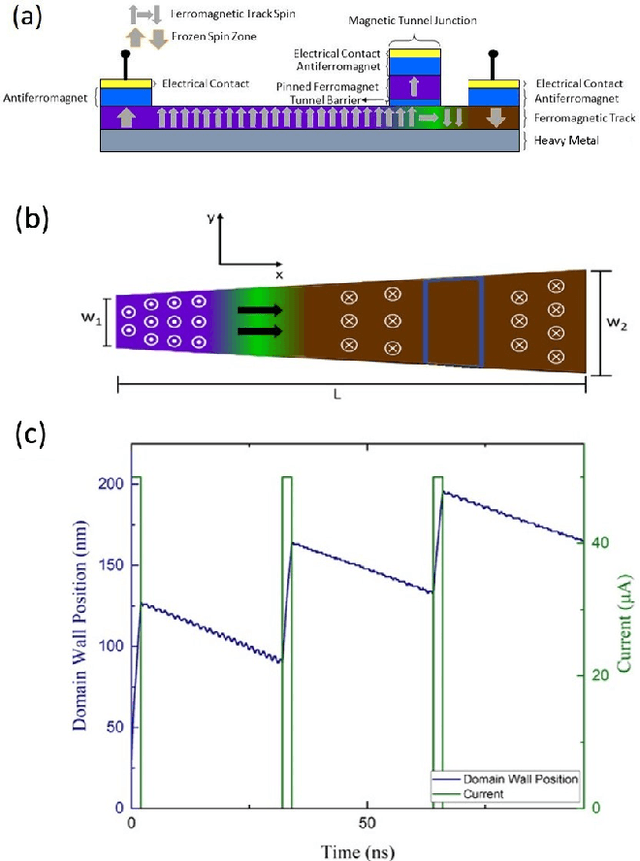
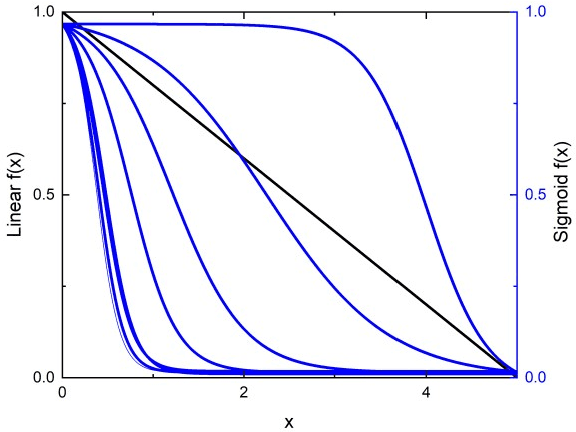
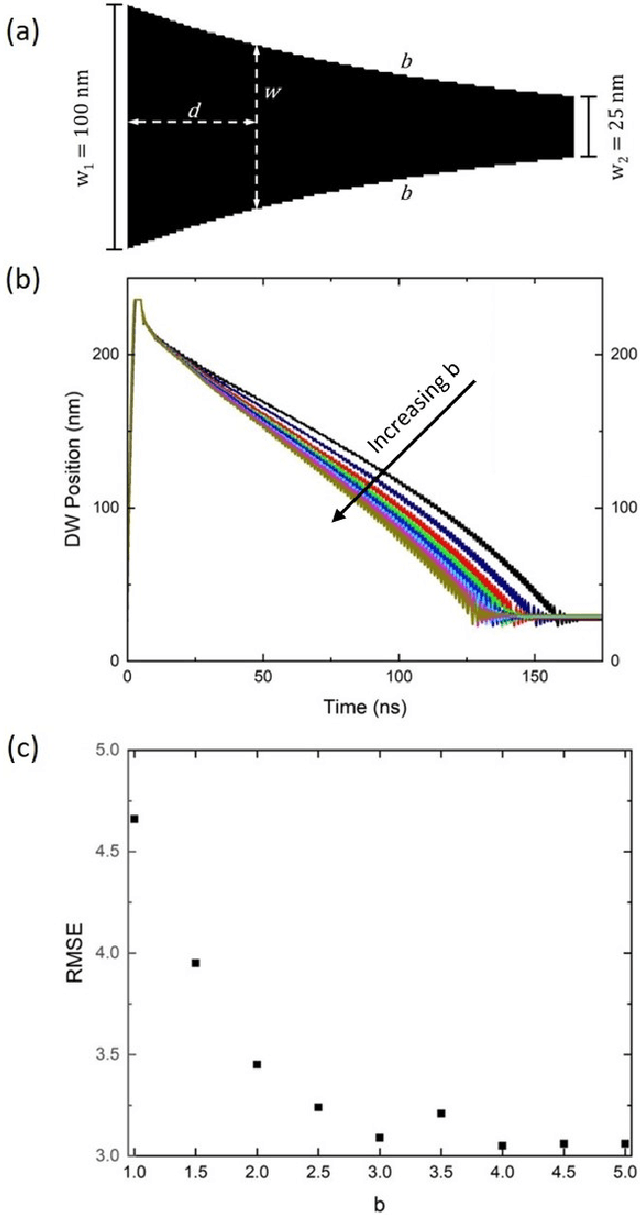
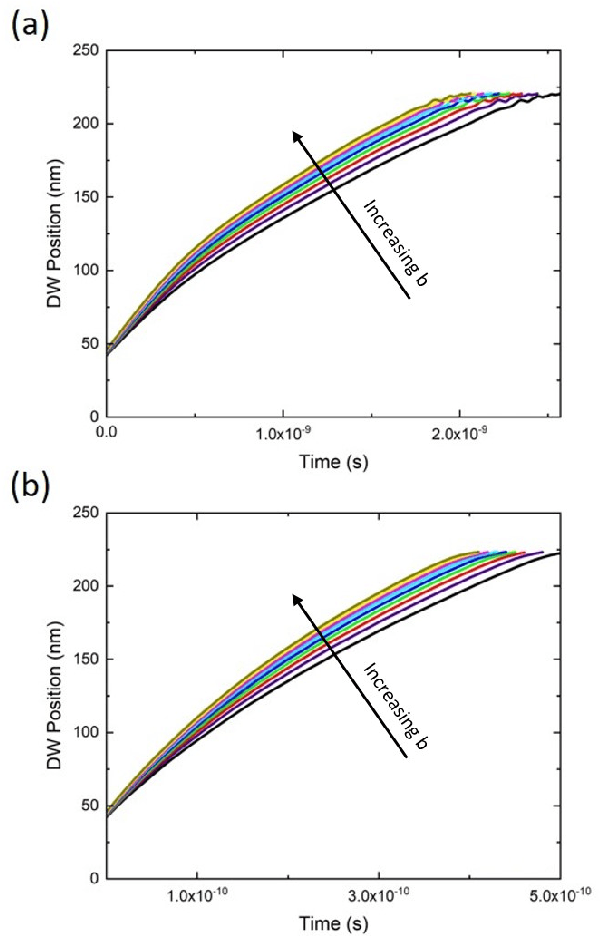
Abstract:Complementary metal oxide semiconductor (CMOS) devices display volatile characteristics, and are not well suited for analog applications such as neuromorphic computing. Spintronic devices, on the other hand, exhibit both non-volatile and analog features, which are well-suited to neuromorphic computing. Consequently, these novel devices are at the forefront of beyond-CMOS artificial intelligence applications. However, a large quantity of these artificial neuromorphic devices still require the use of CMOS, which decreases the efficiency of the system. To resolve this, we have previously proposed a number of artificial neurons and synapses that do not require CMOS for operation. Although these devices are a significant improvement over previous renditions, their ability to enable neural network learning and recognition is limited by their intrinsic activation functions. This work proposes modifications to these spintronic neurons that enable configuration of the activation functions through control of the shape of a magnetic domain wall track. Linear and sigmoidal activation functions are demonstrated in this work, which can be extended through a similar approach to enable a wide variety of activation functions.
CMOS-Free Multilayer Perceptron Enabled by Four-Terminal MTJ Device
Feb 03, 2020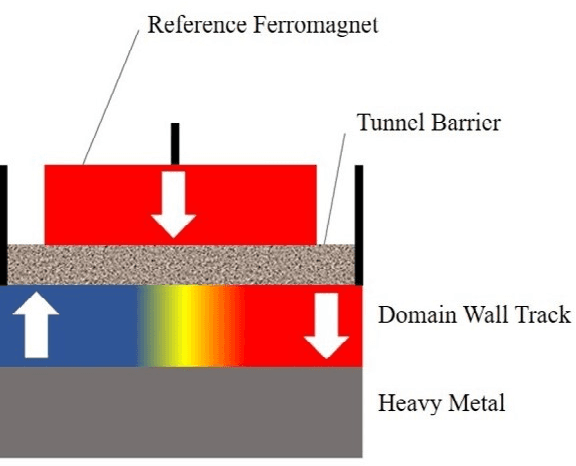
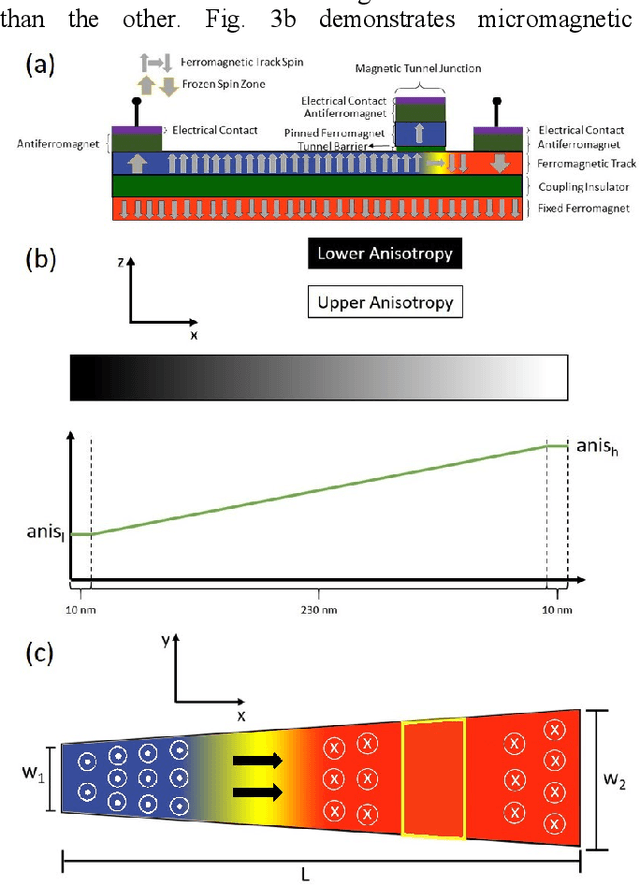
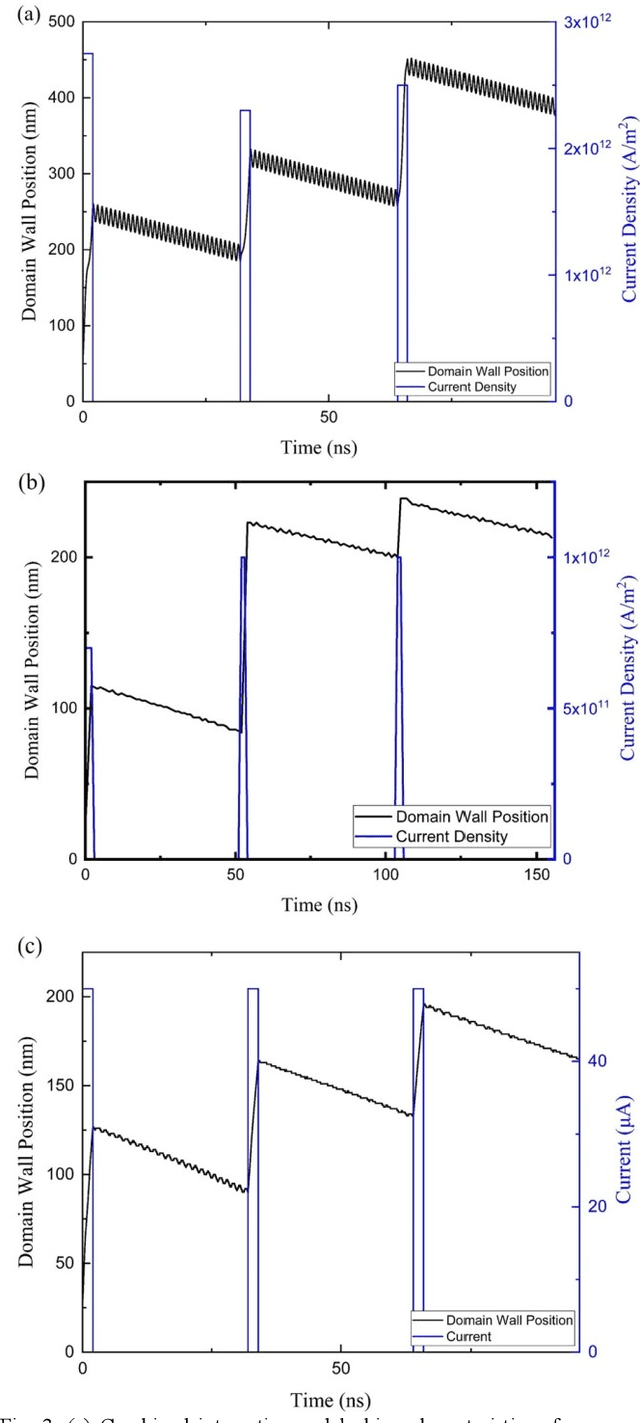
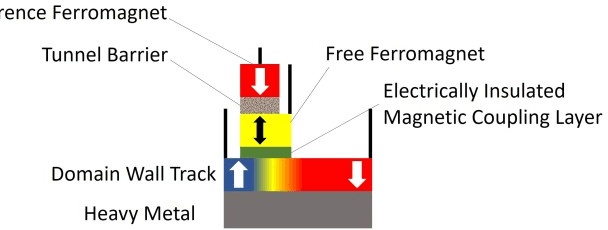
Abstract:Neuromorphic computing promises revolutionary improvements over conventional systems for applications that process unstructured information. To fully realize this potential, neuromorphic systems should exploit the biomimetic behavior of emerging nanodevices. In particular, exceptional opportunities are provided by the non-volatility and analog capabilities of spintronic devices. While spintronic devices have previously been proposed that emulate neurons and synapses, complementary metal-oxide-semiconductor (CMOS) devices are required to implement multilayer spintronic perceptron crossbars. This work therefore proposes a new spintronic neuron that enables purely spintronic multilayer perceptrons, eliminating the need for CMOS circuitry and simplifying fabrication.
Exploiting Dual-Gate Ambipolar CNFETs for Scalable Machine Learning Classification
Dec 09, 2019



Abstract:Ambipolar carbon nanotube based field-effect transistors (AP-CNFETs) exhibit unique electrical characteristics, such as tri-state operation and bi-directionality, enabling systems with complex and reconfigurable computing. In this paper, AP-CNFETs are used to design a mixed-signal machine learning (ML) classifier. The classifier is designed in SPICE with feature size of 15 nm and operates at 250 MHz. The system is demonstrated based on MNIST digit dataset, yielding 90% accuracy and no accuracy degradation as compared with the classification of this dataset in Python. The system also exhibits lower power consumption and smaller physical size as compared with the state-of-the-art CMOS and memristor based mixed-signal classifiers.
 Add to Chrome
Add to Chrome Add to Firefox
Add to Firefox Add to Edge
Add to Edge